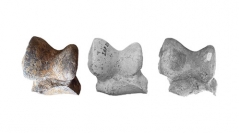

 Comptes Rendus Palevol
16 (7) - Pages 762-773
Comptes Rendus Palevol
16 (7) - Pages 762-773Stephanorhinus etruscus is one of the most abundantly recorded and better known Eurasian Early Pleistocene rhinoceroses. Nevertheless, the first and last appearances of this species, as well as its paleogeographic distribution, are controversial and debated in literature. S . etruscus is documented since the latest Pliocene in Spain (Las Higueruelas), Italy (Montopoli and Castelnuovo di Barardenga), France (Perrier–Les Étouaires) and Romania (Iarăș–Cariera Veche). During the Early Pleistocene, S . etruscus occurred in several Spanish, French and Italian localities, as well as in The Netherlands (e.g., Tegelen), Germany (e.g., Thiede), Greece (e.g., Aivaliki) and Israel (e.g., Ubeidiya). The last appearance of S . etruscus in Eurasia is debatable. Etruscan rhino populations survived till the Jaramillo subchrone (around 1.1 Ma) in France (Bois-de-Riquet), Romania (Betfia XII) and Hungary (Osztramos 2 and 8), and close to the early–middle Pleistocene transition in Spain (Cueva Victoria, Huéscar 1, Atapuerca TD4, TD6 and TD8), and Italy (Monte delle Piche).
Paleobiogeography, Biochronology, Dispersal, Extinction, Pliocene, Early Pleistocene